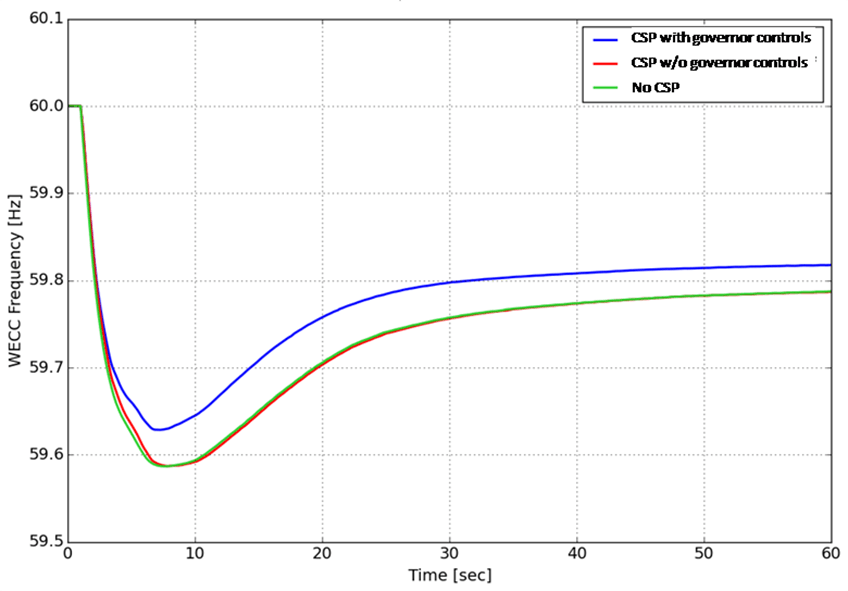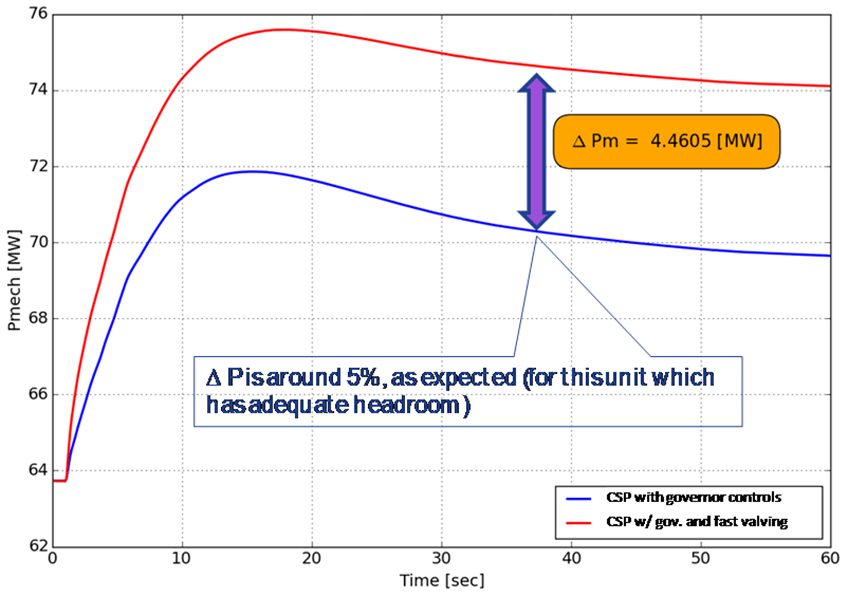Using CSP to Improve Frequency Stability of Power Grid
The National Renewable Energy Laboratory (NREL) and General Electric (GE) have joined forces to tackle an issue that is relatively new ground for the power industry. Five years ago, most people couldn't envision high penetration on the grid of variable-generation renewables such as photovoltaics (PV) and wind. But now, this scenario is becoming a reality, so the topic of maintaining grid stability is huge.
Kara Clark, a former NREL researcher, collaborated with Nicholas Miller and Slobodan Pajic of GE Energy Consulting in a recently published study, "Concentrating Solar Power Impact on Grid Reliability."
"The overall problem in their crosshairs was whether the reliability and stability of the power grid is negatively impacted by increased penetration of solar and wind variable-generation technologies," said Paul Denholm, principal energy analyst at NREL. "One element of grid stability concerns maintaining frequency within tight system tolerances. PV and wind generators—which are 'non-synchronous' or inverter-based technologies—do not provide traditional inertial and primary frequency response in the same way as conventional thermal and hydro generators. And this difference can decrease the ability of the grid to arrest changes in frequency resulting from large contingency events."
The NREL/GE study simulated scenarios in which the Western Interconnection of North America meets about 33% of annual demand with solar and wind, and where instantaneous penetration of variable generation on this system is up to about 60%. The system has an historical peak demand of about 152 gigawatts and serves about 80 million people.
Using the industry-standard Positive-Sequence Load Flow model, the researchers explored the impacts on frequency when a large generator goes down. The base case examined only non-synchronous PV and wind. A second case replaced a fraction of the PV with concentrating solar power (CSP) and examined CSP's ability to provide frequency-responsive services. And in a third case, a governor was added to the CSP, where the governor is a device that allows the generator to respond to frequency directly and automatically.
Figure 1 shows the three cases for the loss of the 2,750-megawatt Palo Verde generator, which is the design basis for planning contingency events in the Western Interconnection.
-
The green trace, which assumes no CSP, has the greatest frequency decline—approaching 59.5 hertz (Hz), which is the point at which underfrequency load shedding, or blackouts, will occur.
-
The red trace corresponds to replacing about 10 gigawatts of PV with CSP. In this case, the CSP units are on line and contribute inertia, but provide no governor (or primary frequency) response. The rate of frequency decline is slowed, but the benefit is very small and cannot restore the frequency.
-
The blue trace engages the CSP governor, which increases the frequency nadir (the lowest point of the trough in the figure) and the settling frequency (the value of the curve moving toward the right).

Figure 1. Impact of CSP inertial and governor response on frequency in the Western United States. CSP can help prevent grid collapse by keeping the frequency nadir above 59.5 hertz.
The NREL/GE study also compared the response of CSP to other sources of frequency response, including energy storage. In addition, alternative CSP designs were considered that could be used to increase frequency response and potentially increase value. For example, Figure 2 shows the impact of "fast valving"—an operational technique that could increase the responsiveness of CSP plants to frequency events.

Figure 2. Impact of fast valving on CSP governor response.
In summarizing the key findings of this study, two key points emerge related to CSP:
- Primary frequency response for CSP helps to meet frequency response obligation and can substitute for fast frequency response from PV, energy storage, or demand response.
- As the sun sets and PV's contribution falls off, the benefits of frequency response from CSP can be substantial and may represent valuable options for grid operators.
"The overall conclusions highlight that integrating large amounts of solar power in the Western Interconnection for the conditions studied does not present any obviously intractable challenges, " said Denholm "Specifically, frequency response can be aided significantly by frequency-sensitive controls on CSP and PV. Continued reliability of our power system can be understood and ensured—using the tools, data, and results of this study—if good system engineering practices are followed as systems are built out."
Learn more about CSP research on the NREL website.
Last Updated May 28, 2025
